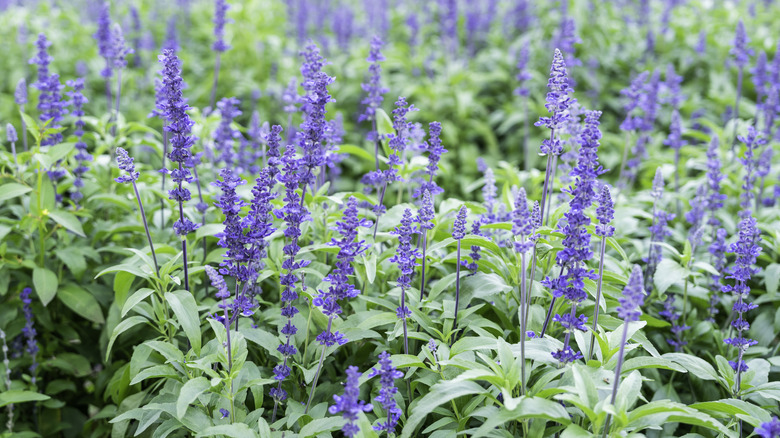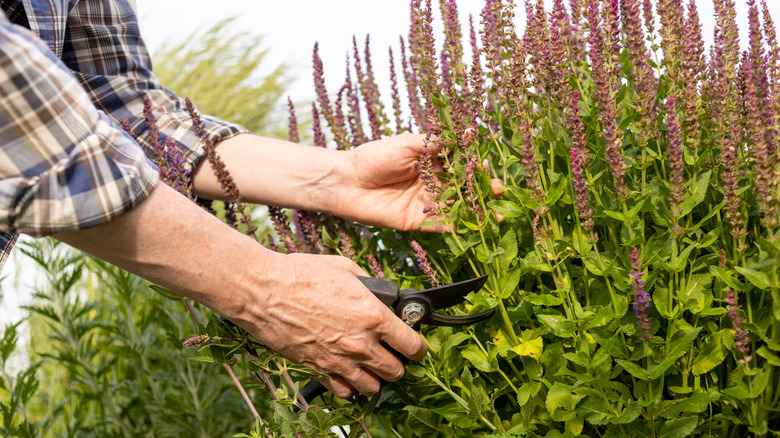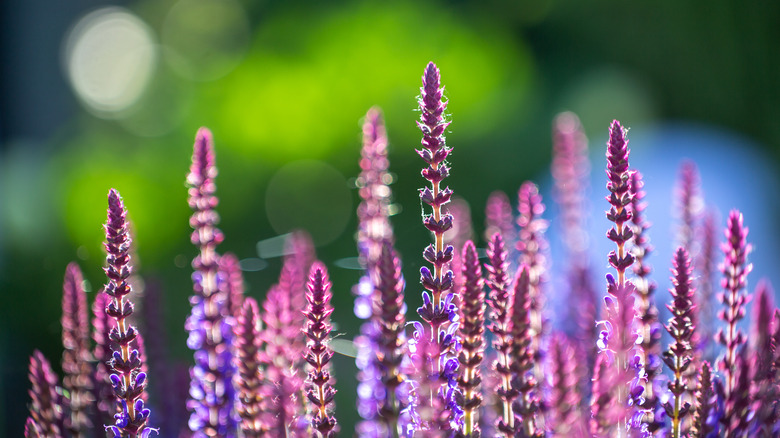How To Deadhead Salvias In The Summer For Healthy Future Blooms
As versatile flowers that do just as well in a pot as in your garden, salvias make excellent additions to your yard. This colorful plant that will thrive alongside petunias in the garden has long flower spikes that are often buzzing with bees or frequented by hummingbirds and butterflies, so you may want to keep them blooming as long as you can. While deadheading isn't necessary for the health of the plants, it will help your salvias bloom all summer by putting energy into making new flowers instead of seeds.
To deadhead your salvias, all you have to do is cut off the dead or dying flower just above the first set of leaves. When you notice that all or most of the flower spike is brown, a quick snip with a sharp and clean pair of scissors or pruners is all you need to set up your salvia plant for reblooming. Cutting above the first set of leaves will allow new blooms to sprout from the side of the stem.
Deadheading vs pruning salvia
In the garden, it's easy to get lost in the terminology, considering how much overlap there can be. In this case, it's helpful to remember that there is a difference between deadheading and pruning. Both are excellent ways to get more blooms on your salvia this summer, but when and how they are done differs greatly. As mentioned, deadheading is a gentle, continuous process. Cutting off the dead "heads" just above the leaves encourages side shoots to spring forward, so this can be done over and over throughout the blooming season.
On the other hand, pruning is a more intense, but necessary, process for the plant. To prune salvia for endless blooms all summer, cut the whole plant back to about three inches off of the ground or as low as you can go without cutting off the new growth at the very base. The delicate little leaves will be sprouting from the crown of the plant, so they will be easy to see. For optimum health and plant shape, pruning should be done once or twice a year, though it's best to avoid autumn prunes. The old foliage will protect some of the new growth during the cold months.
More tips for healthier salvia blooms
A healthy plant makes healthy blooms. Making sure that your salvias have enough food and water is the best thing you can do for them. They need to be in soil that doesn't hold onto water for too long, so it's best to avoid heavy clay spots if possible. Salvias like to have a little time to breathe between waterings, so there's no need to bust out the hose every day.
They also like a bit of special attention after pruning. You can pamper them with a fresh touch of mulch, and if you're growing in a container, you should add a fertilizer with potassium in it. Then let them bask in that full sun, and they are sure to keep coming back with fresh blooms that pollinators love so much! Hummingbirds will love these plants in your hanging baskets or flower beds, especially if they are red, and salvias seem to be constantly humming with bees.


